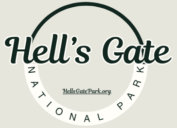Stay Safe, Informed, and Prepared for Your Adventure in the Wild
Hell’s Gate National Park is known for its dramatic landscapes and thrilling activities, but like all natural environments, it demands respect for nature and careful planning. From geothermal steam vents to seasonal flash floods, the park’s dynamic terrain can pose risks if you’re unprepared. This guide covers everything you need to know about safety, health, and emergency support while visiting Hell’s Gate.
🛡️ Is Hell’s Gate National Park Safe?
Yes, Hell’s Gate is considered one of the safest national parks in Kenya, particularly because it does not host large predators like lions or elephants. This makes it suitable for walking, cycling, and rock climbing—activities rarely permitted in other parks.
✅ Why It’s Generally Safe:
- No big predators
- Park is patrolled and managed by Kenya Wildlife Service (KWS)
- Designated trails and marked activity zones
- Professional guides available for hire
- Cell network coverage is available in most areas
⚠️ What to Be Cautious About:
- Cliffs and gorges can be dangerous without proper footwear or guidance
- Sudden weather changes can lead to flash floods in gorges
- Geothermal features like steam vents are very hot and can cause burns
- Biking hazards include loose gravel and steep slopes—helmets recommended
- Rock climbing and abseiling should only be done with certified guides
👨👩👧 Hell’s Gate is family-friendly, but children should always be supervised—especially near cliffs or hot springs.
🌧️ Weather Warnings at Hell’s Gate National Park
The weather in Hell’s Gate can shift quickly, especially during the rainy seasons (March–May and October–November), which are associated with increased safety risks.
🚨 What to Watch Out For:
- Flash floods in Ol Njorowa Gorge and other canyon areas
- Slippery trails and falling rocks during or after heavy rain
- Steam burns near geothermal vents (especially when hidden by rain or mist)
- Sudden wind gusts on cliff edges or while rock climbing
🔔 Safety Measures:
- Avoid gorge hikes if it has rained within 24 hours
- Always ask rangers at the entrance about current weather alerts
- Don’t enter restricted areas when signs warn of unstable terrain
- Use a waterproof jacket, proper boots, and avoid cotton clothing during wet days
📲 You can also check weather forecasts for Naivasha (the nearest town) on apps like AccuWeather or Weather.com before travel.
🌊 Flash Flood Risks in Hell’s Gate
Flash floods are a real and potentially life-threatening hazard—especially in the Ol Njorowa Gorge, which channels rainwater from distant hills into a narrow canyon.
⚠️ How Flash Floods Happen:
- Rainfall upstream (even if not visible in the park) flows into the gorge
- Water levels can rise within minutes
- Escaping is difficult due to steep, slippery canyon walls
🚫 If a Flood Occurs:
- Do not enter or remain in gorges during or after rain
- Move to high ground immediately
- Do not try to climb wet rock walls—wait for rescue if trapped
✅ Prevention:
- Gorge closures are strictly enforced during the rainy season
- Guides and rangers monitor weather and trail conditions daily
- Only hike the gorge during dry, sunny weather
📍 If unsure, ask KWS rangers for the current gorge safety status before starting your hike.
☎️ Emergency Contacts at Hell’s Gate
If you encounter an emergency, Kenya Wildlife Service (KWS) staff are trained to provide first aid and coordinate evacuations.
🆘 Essential Contacts:
| Service | Contact |
|---|---|
| Hell’s Gate Main Gate (KWS) | +254 722 203 342 / +254 773 727 911 |
| KWS Naivasha Station (Backup) | +254 50 202 1184 |
| Naivasha Sub-County Hospital | +254 50 202 1077 |
| Red Cross Emergency (Kenya) | 1199 (Toll-Free) |
| Local Police (Naivasha) | +254 50 202 1011 |
📱 Always save emergency numbers on your phone before entering the park. Network is available in most areas but may be weak near the gorge or cliffs.
🏥 Health Tips for Hell’s Gate Visitors
Staying healthy during your Hell’s Gate visit ensures a safe and enjoyable adventure. The park’s semi-arid climate, physical activity levels, and remote location require basic health precautions.
🧴 Essential Health Guidelines:
- Stay Hydrated: Carry at least 2 liters of water per person
- Wear sunscreen: High UV exposure year-round
- Use insect repellent: Mosquitoes and tsetse flies are rare but possible
- First Aid: Bring a personal kit with antiseptic, band-aids, painkillers, antihistamines
- Watch your step: Uneven trails can lead to sprained ankles or falls
🚫 Health Risks to Avoid:
- Burns from hot springs or steam vents—never touch or bathe in unauthorized areas
- Exhaustion from overexertion during hikes or cycling without proper breaks
- Heat stroke—take shade breaks and avoid the midday sun
📦 Some lodges and the park gate have basic first-aid, but emergency medical services are in Naivasha town (about 30–45 minutes away).
✅ Final Safety Checklist for Visitors
| ✅ Must-Do Before & During Your Visit |
|---|
| Check weather forecasts and gorge status |
| Register at the main gate and ask for safety updates |
| Bring plenty of water, sunscreen, and first aid |
| Wear proper hiking shoes and sun protection |
| Keep children supervised near cliffs and geothermal areas |
| Save emergency contacts in your phone |
| Avoid gorges or steam zones during rain or if unsure |
| Follow park rules and respect wildlife distance |
🌍 Hell’s Gate is a park where freedom meets responsibility—a place to hike, bike, climb, and soak in geothermal energy safely, as long as you’re informed and prepared.
